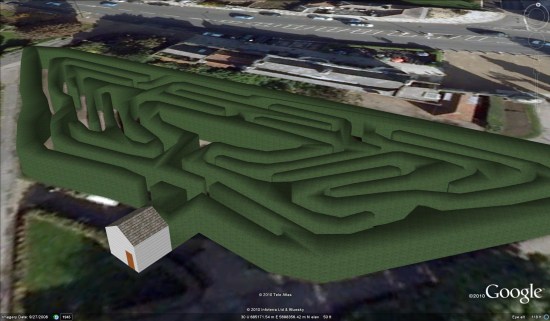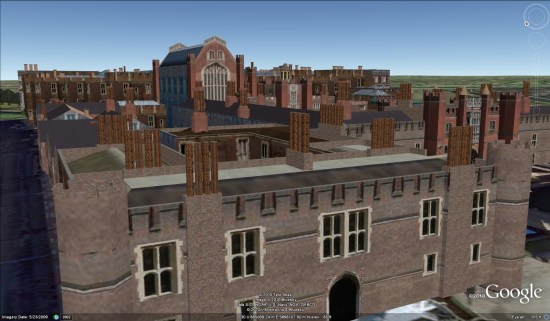GEB reader ‘Will from the UK’ has sent us another cool find — a 3D maze! The grounds of the Hampton Court Palace in London include a lot of greenery, and this maze is part of it.

This would have been pretty neat in any case, but it’s made much cooler by the new “Ground Level View” in Google Earth 6. You can give it a try by using this KML file![]() . If you use a Space Navigator, try to fly through it. If not, then grab the Street View pegman from the navigation tools and put him in the maze. This will shift you to “Ground-Level View” mode, and then you can use the arrow keys to work your way through the maze.
. If you use a Space Navigator, try to fly through it. If not, then grab the Street View pegman from the navigation tools and put him in the maze. This will shift you to “Ground-Level View” mode, and then you can use the arrow keys to work your way through the maze.
The lack of collision detection in Google Earth means that you can go right through the shrubs, which makes it a bit difficult to work your way through. Still, it’s a pretty neat find! If you get stuck, Will created this simple KML file![]() that shows the path to the center.
that shows the path to the center.
While you’re there, be sure to check out the Palace itself. It possibly has the most chimney stacks of any building in Google Earth — there are a ton of them!

Were you able to complete the maze? Have you discovered any other locations that are much more interesting now thanks to the “ground level” mode?

